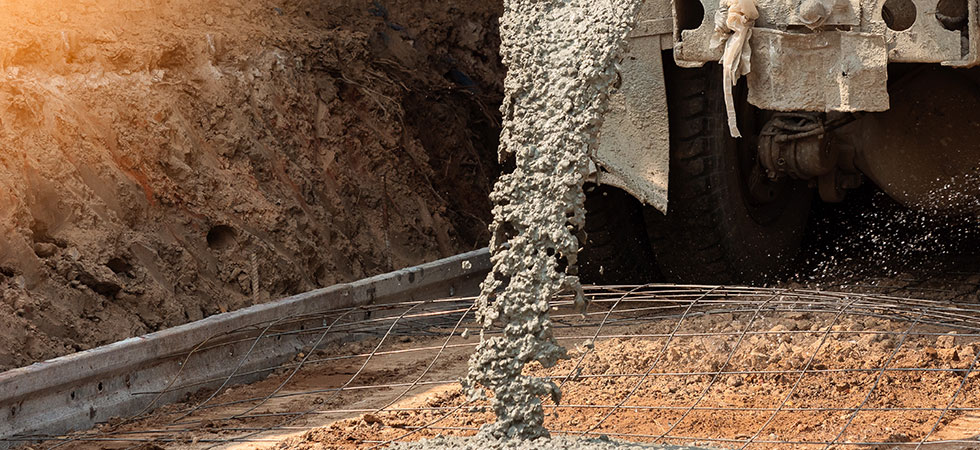
Have you ever wondered how asphalt came to be? How was it discovered and turned into the durable and versatile material we know today?
Asphalt has become a crucial part of home and commercial construction, so understanding its history can help you make informed decisions about purchasing asphalt supplies. Let's explore how asphalt was first discovered. You'll be surprised to learn how far back it goes!
Introduction to Asphalt
Asphalt has been used as a paving material for centuries, with the ancient Babylonians and Egyptians using it to waterproof their buildings and structures—the modern use of asphalt as a road-paving material dates back to the 1800s.
The discovery of asphalt is believed to have occurred in 1595 when a French explorer named Samuel de Champlain observed that the indigenous people of Canada used asphalt to waterproof their canoes. In the early 1800s, the first modern asphalt road was built in Paris, France, and from there, it quickly spread across Europe and eventually to the United States.
Today, asphalt is the most commonly used paving material for roads and highways due to its durability, flexibility, and cost-effectiveness.
History of Asphalt
Asphalt has been used as a construction material for centuries. The ancient Mesopotamians used asphalt for waterproofing and building infrastructure such as roads and buildings. The word "asphalt" comes from the Greek word "asphaltos," which means "secure" or "binding."
The first recorded use of asphalt in Europe was in the 14th century when it was used as a waterproofing material. In the 19th century, asphalt was used for road construction in France, and it quickly became the preferred material for road building throughout Europe and North America.
Asphalt was discovered through natural processes such as the evaporation of crude oil and the seepage of bituminous materials from the earth's surface. Abraham Darby created the first artificially produced asphalt in the late 1700s by distilling coal to extract a tar-like substance. This discovery led to the development of modern asphalt production, and asphalt has since become a critical building material for roads, roofs, and waterproofing sealants.
Discovery of Asphalt
Asphalt, which is a mixture of hydrocarbons, was discovered thousands of years ago from natural oil seeps. The first recorded use of asphalt can be traced back to ancient civilizations such as the Phoenicians, who used it as caulking for their ships' hulls. Later, the Babylonians and Egyptians used it for waterproofing and embalming. However, the ancient Greeks named the material 'asphaltos,' meaning 'secure' or 'to make stable' due to its waterproofing properties.
The modern development of asphalt as a paving material is attributed to the Scottish civil engineer John McAdam. In the early 1800s, McAdam invented a roadway surface made of crushed stone that allowed the water to drain through it. This surface was then covered with compacted gravel for smoother travel. This method of roadbuilding was known as 'macadamization,' and it became popular in Europe and America.
Later, in the early 1900s, the development of the automobile and the demand for smoother road surfaces led to the use of asphalt as a binder for aggregates, creating the modern asphalt road.
Early Uses of Asphalt
Asphalt was discovered in ancient times as natural seepages from the earth’s surface, but its early uses were strictly limited to waterproofing and mortar production.
The Sumerians used asphalt as a binding material for bricks and pottery, while the ancient Egyptians used it for embalming mummies. The Phoenicians used asphalt to waterproof their ships, and the Persians used it for building waterways and as a medicinal ointment.
Early uses of asphalt were also noted in the 7th century when it was used to construct the walls and towers of the ancient city of Babylon. Later, in the 18th century, asphalt was widely used in Europe for paving streets and footpaths.
Today, asphalt has become an essential component of the modern construction industry and is used as a primary material for roofing, road surfacing, and industrial applications.
Industrialization of Asphalt Production
Asphalt has been a part of human construction for centuries, but it wasn't until the late 1800s that it became an industrialized product. The ancient Babylonians used asphalt as early as 625 BC, but it was primarily used for waterproofing and mortar. The ancient Greeks and Romans also used it in construction, primarily as mortar and to pave roads. However, it was not until the 19th century that asphalt was used as a paving material on a large scale.
In the early 1800s, Native Americans in North America were observed using asphalt as a waterproofing material for their canoes. This led to experiments using asphalt for construction purposes. The first recorded use of asphalt for paving was in Paris in 1824. The street was built using a mixture of asphalt and gravel, and it quickly became popular as a durable and weather-resistant paving material.
By the late 1800s, several manufacturing processes had been developed to mass-produce asphalt. The first was the "Rock Asphalt" process, which involved grinding limestone rocks into fine particles and adding asphalt to bind them into paving material. Other procedures soon followed, including the "Sheet Asphalt" process and the "Mix Asphalt Pavement" process.
Today, asphalt production is highly industrialized, with refineries producing millions of tons yearly. It is widely used for road construction, roofing, and waterproofing, among other applications.
Pro Tip: Proper maintenance is crucial to extend asphalt pavement life, which includes regular cleaning, filling cracks, and applying a seal coat.
Benefits of Asphalt
How was asphalt discovered?
Asphalt has been used for centuries, dating back to the ancient Babylonians, who first used asphalt to waterproof their buildings and structures. However, the modern use of asphalt began in the 1800s when it was first used to pave roads and create sidewalks in Europe.
The discovery of asphalt and its benefits can be attributed to the natural seepage of asphalt from the ground in certain areas, such as the La Brea Tar Pits in Los Angeles.
Asphalt offers several benefits, including its durability, flexibility, and cost-effectiveness. It is an affordable option for paving roads, parking lots, and driveways, requiring minimal maintenance.
Additionally, asphalt is 100% recyclable, making it an eco-friendly option for construction and paving projects. Its ability to absorb noise makes it a popular choice for highways and airports.


